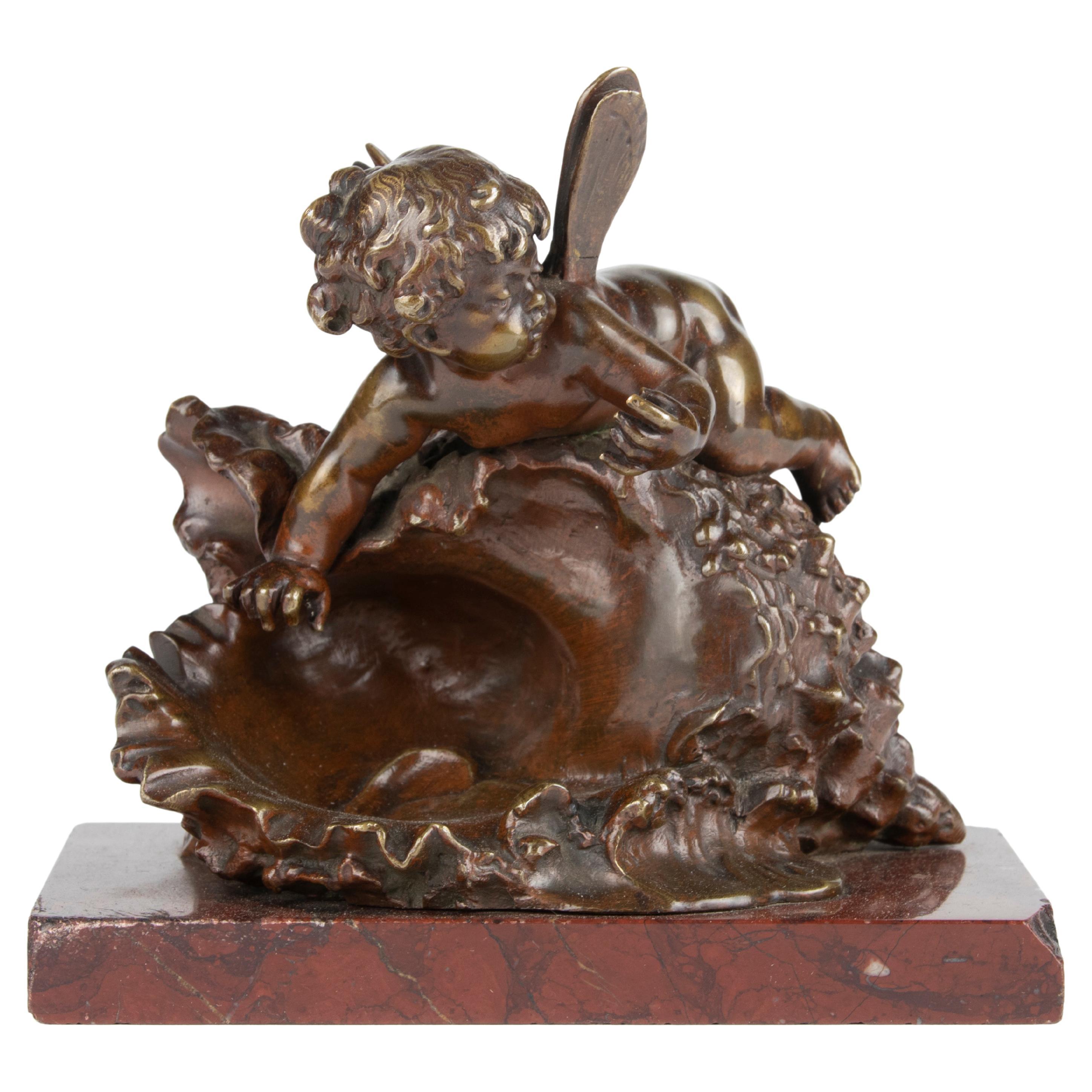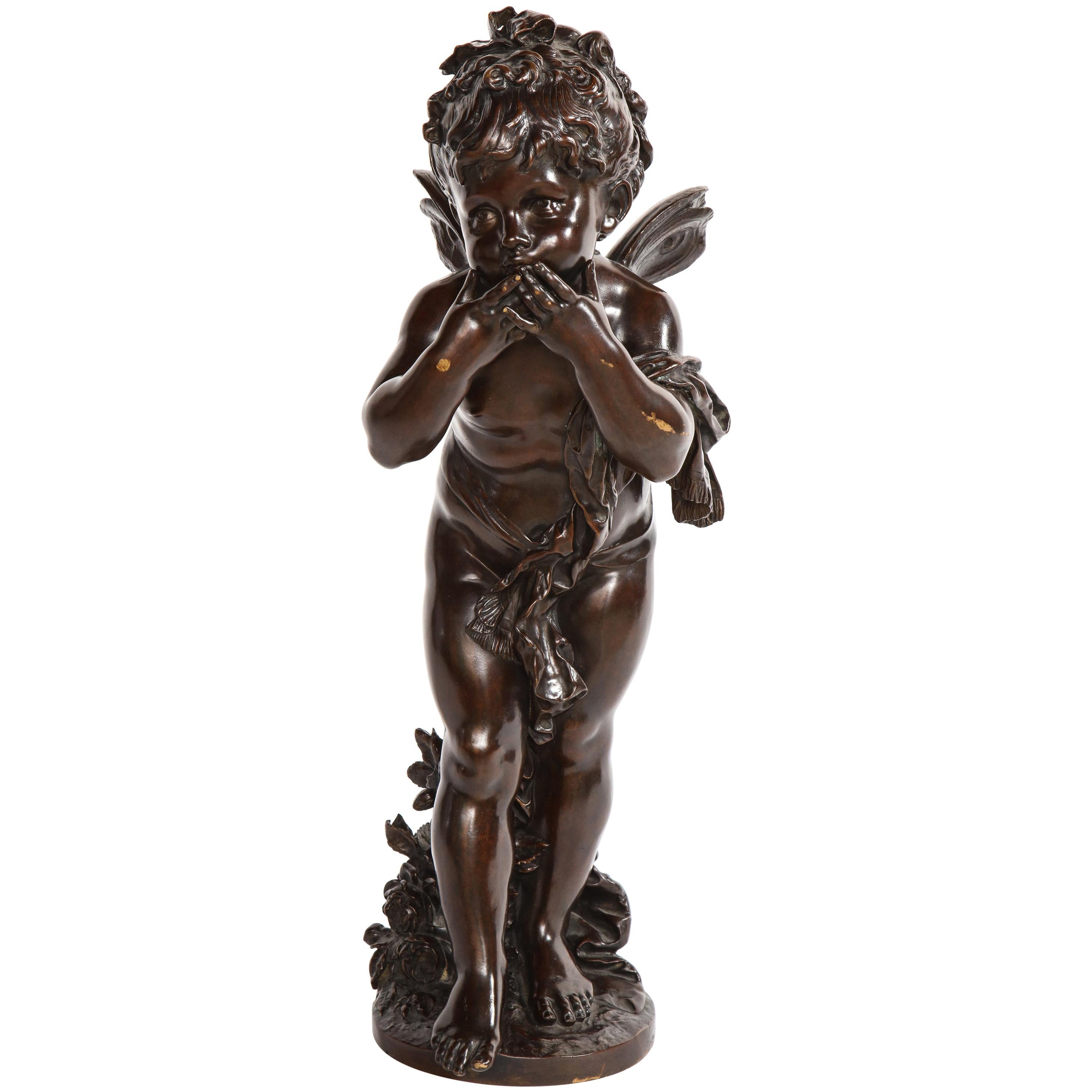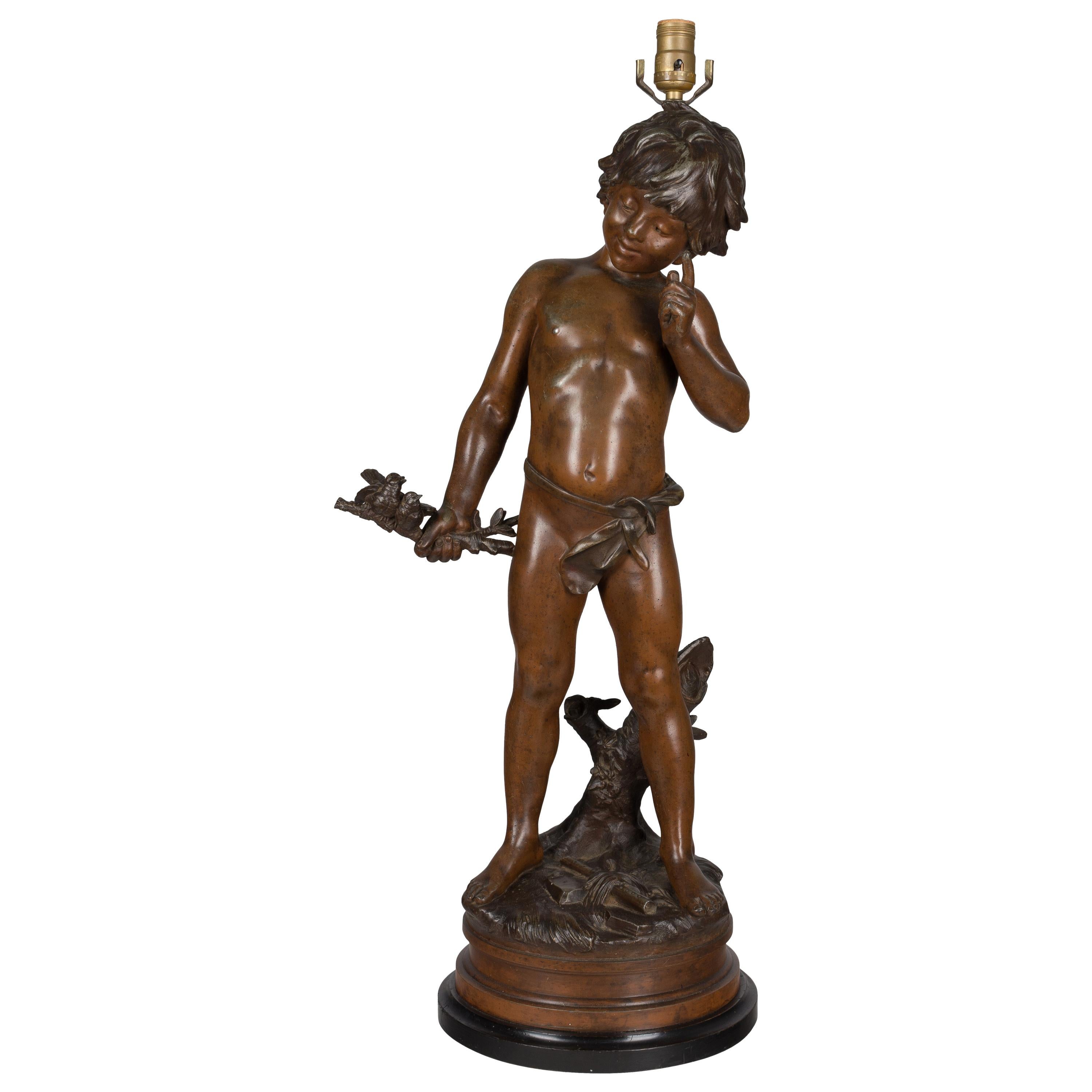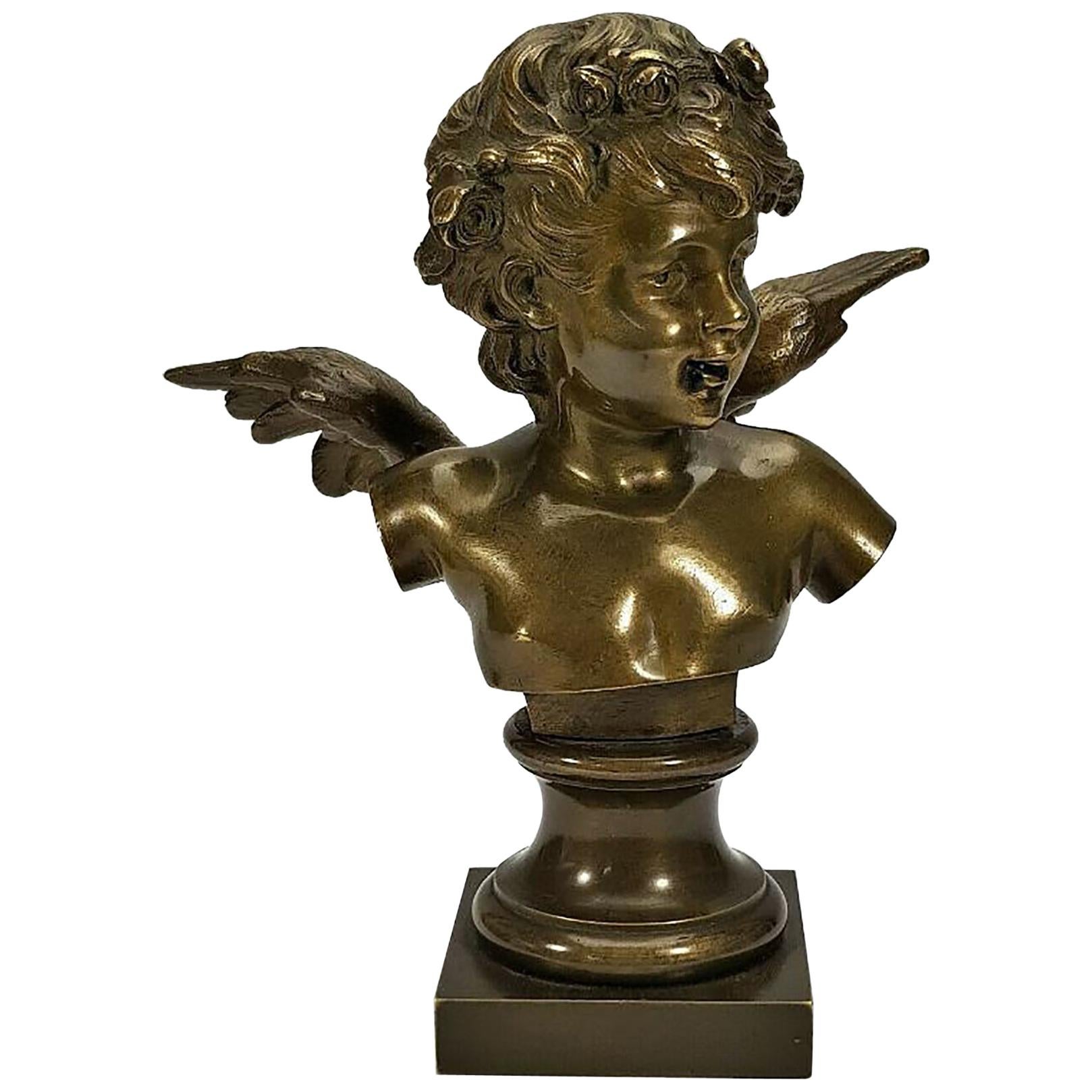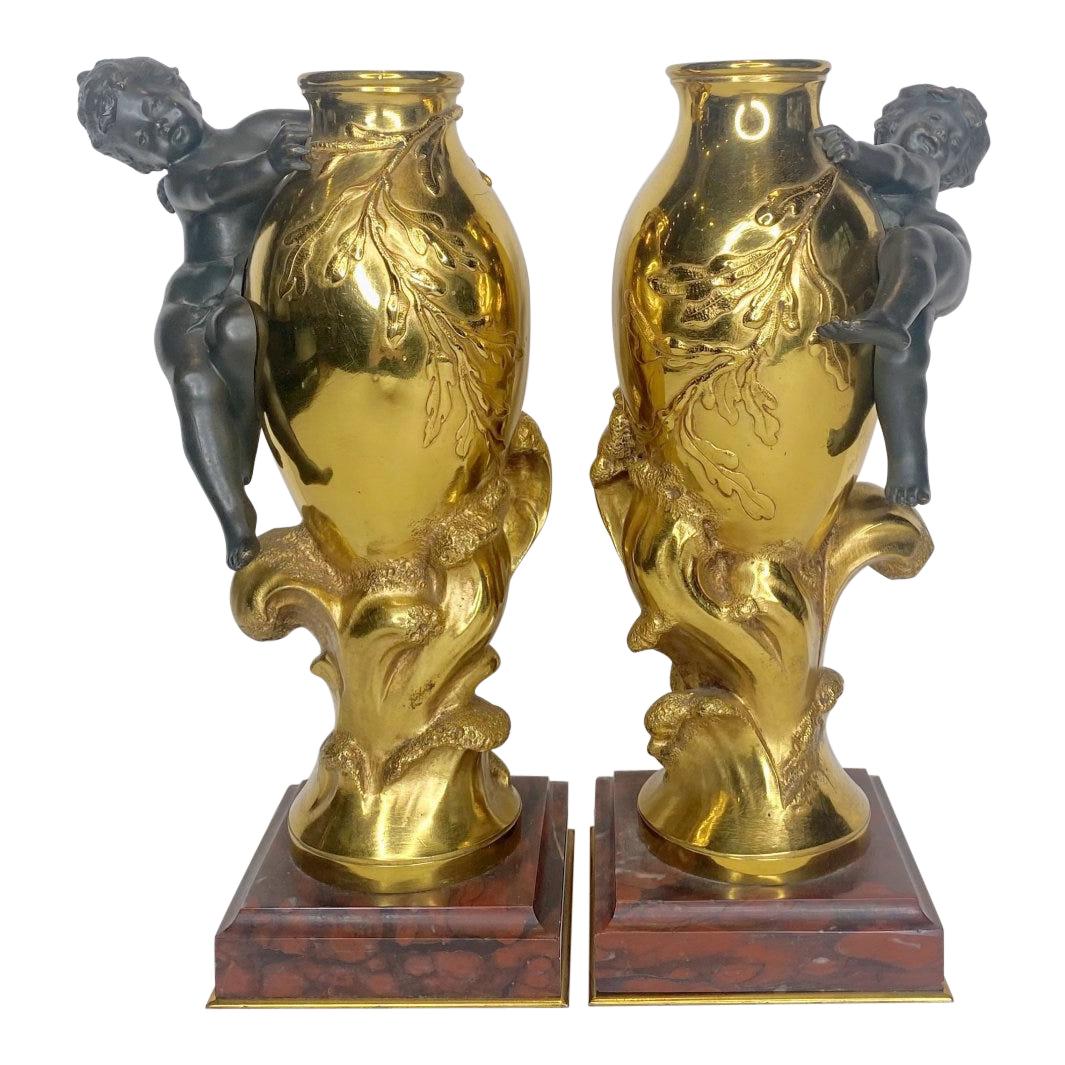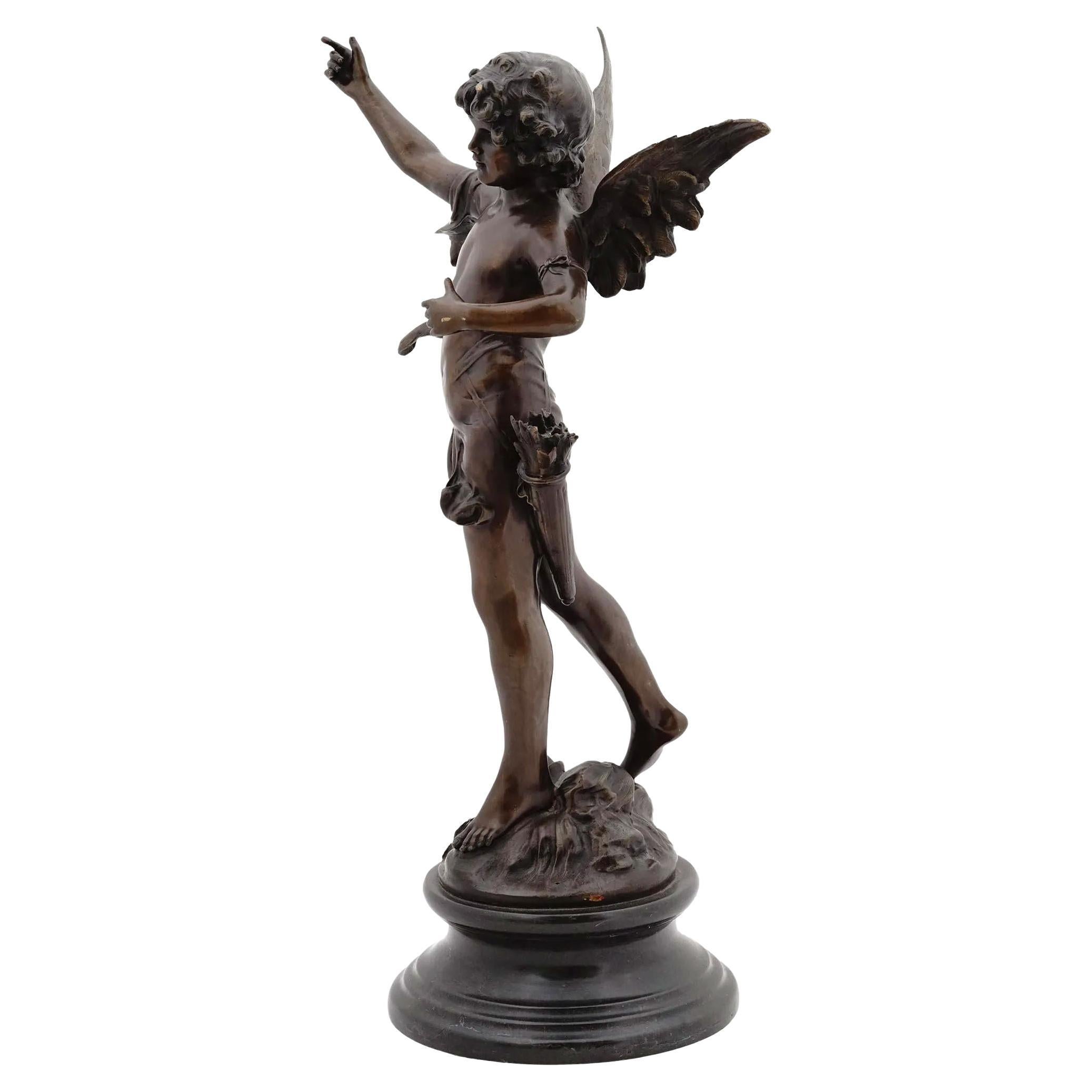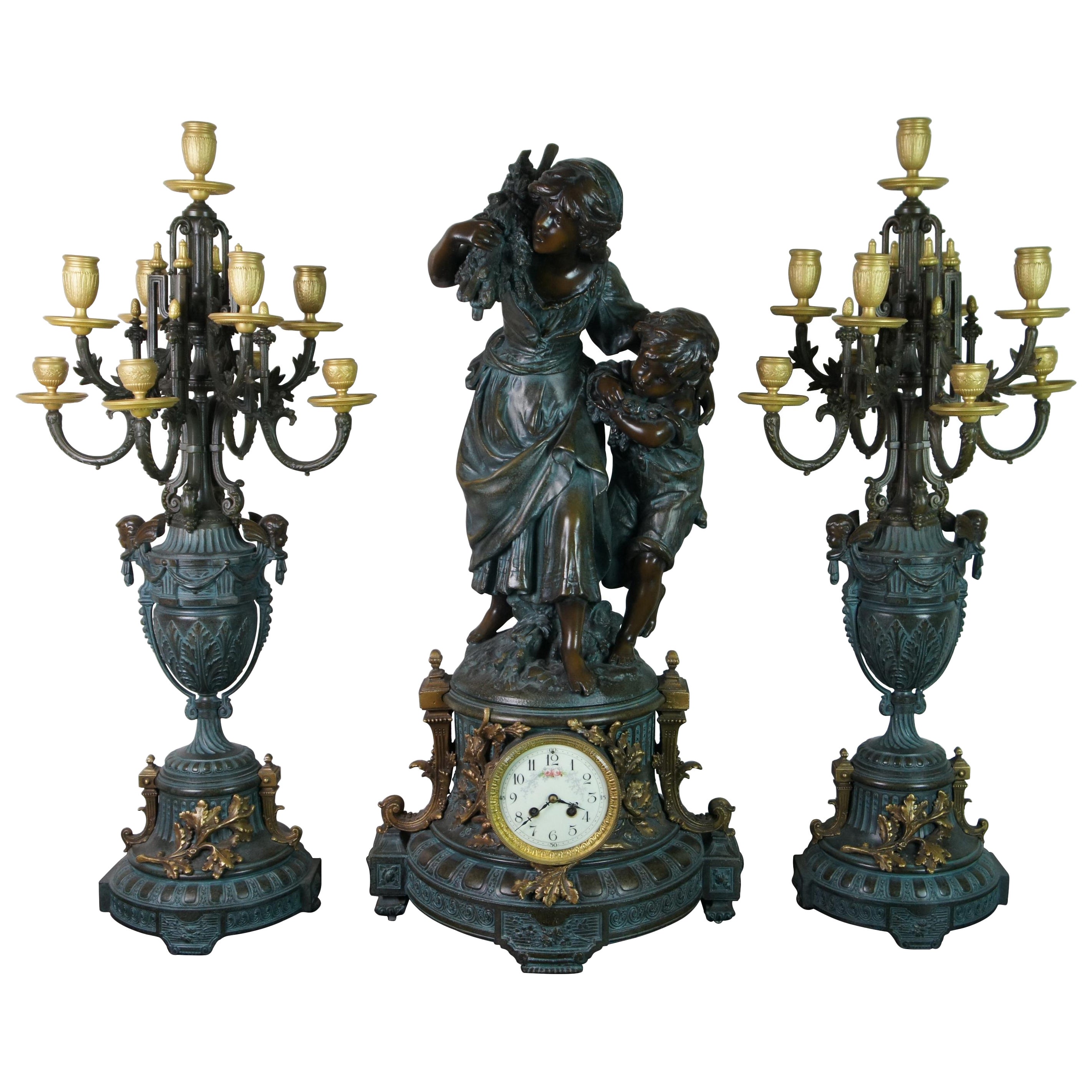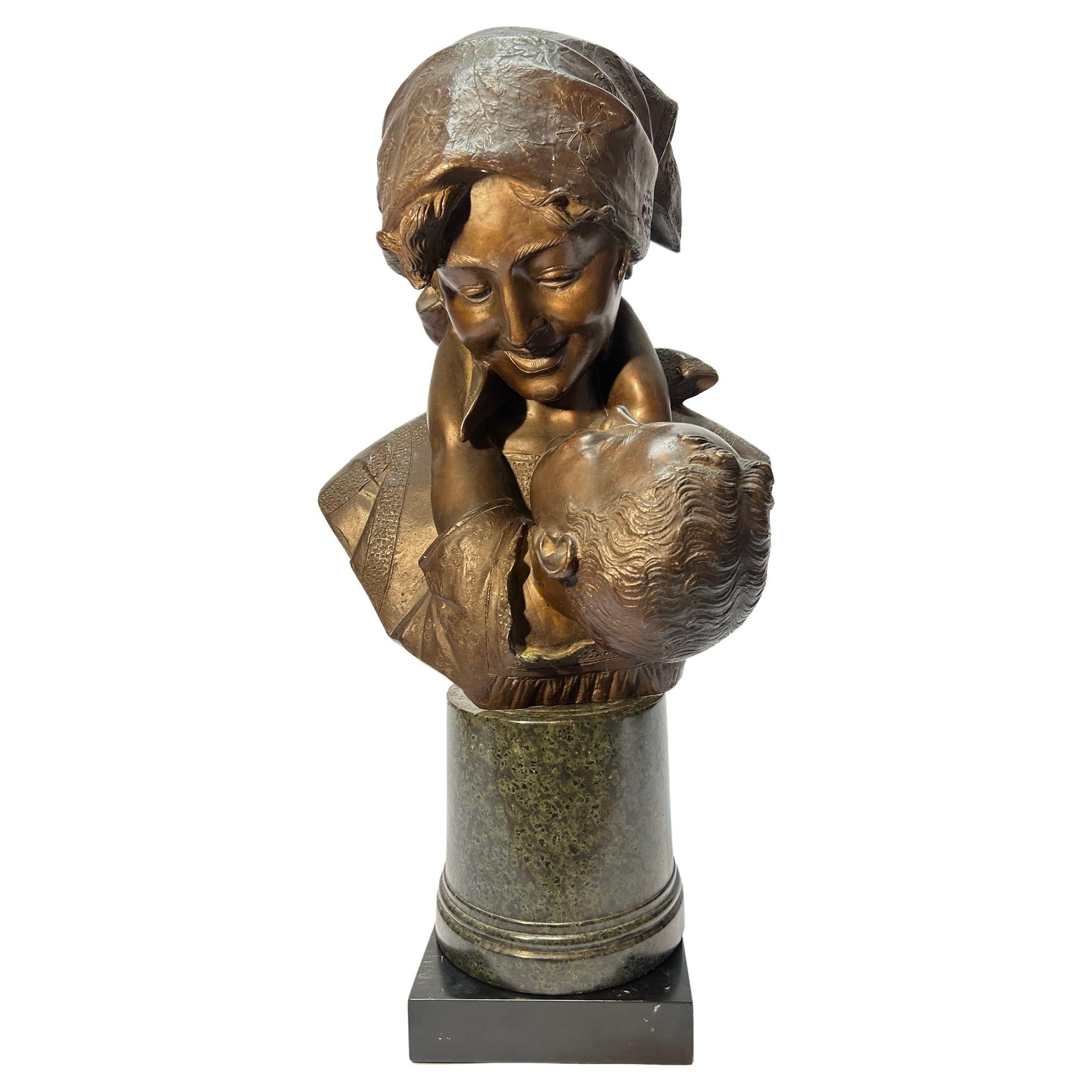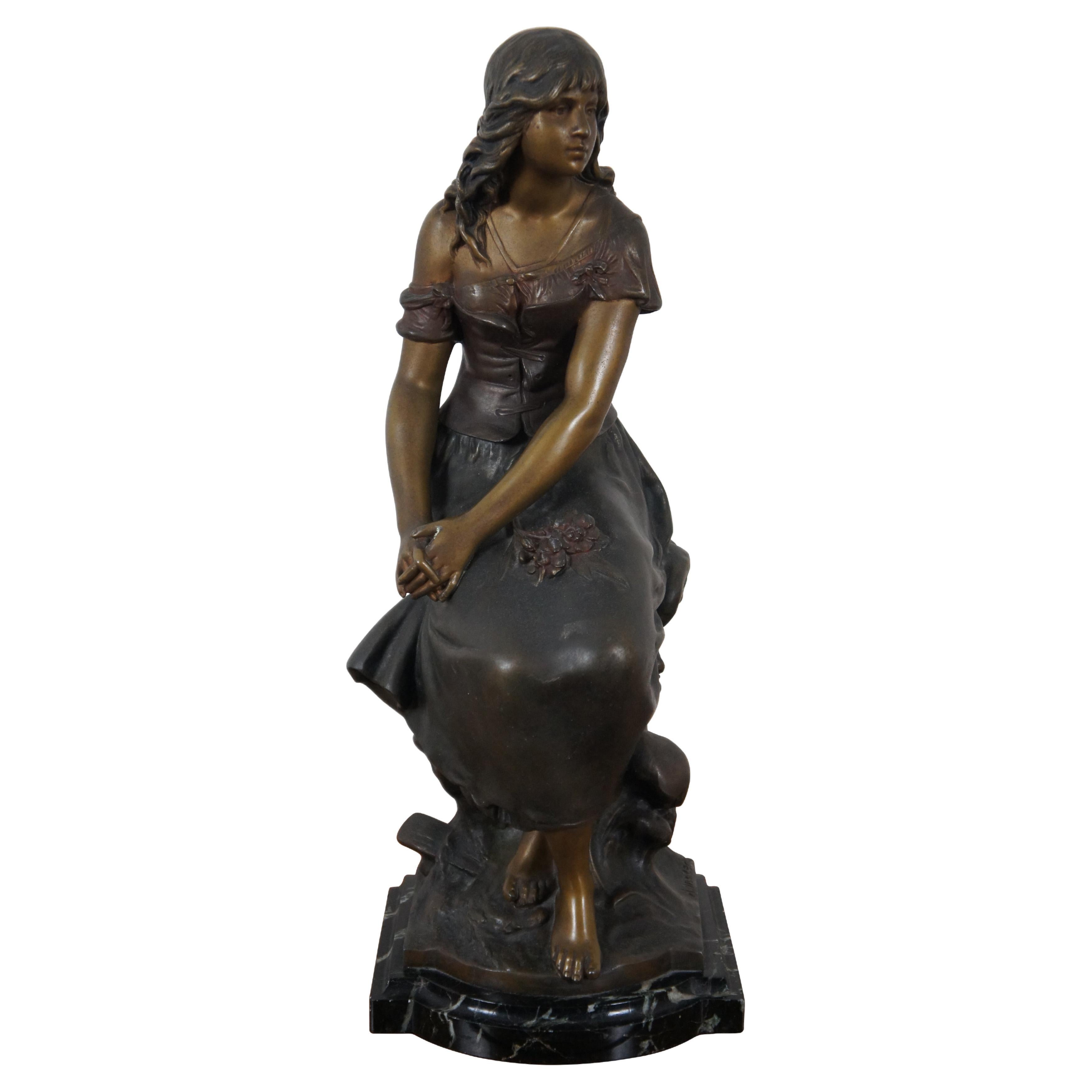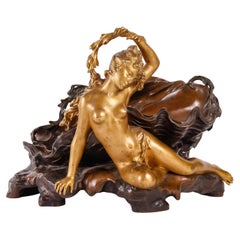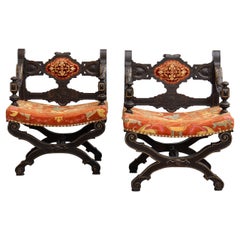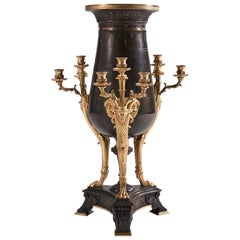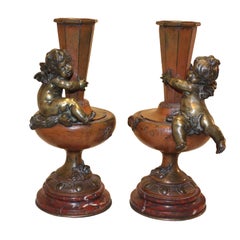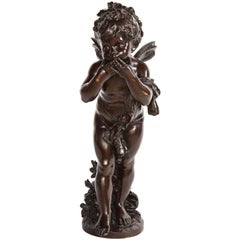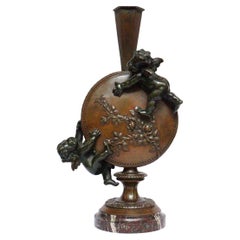
French Napoléon III Bronze Putti Vase by Auguste Moreau
View Similar Items
Want more images or videos?
Request additional images or videos from the seller
1 of 19
French Napoléon III Bronze Putti Vase by Auguste Moreau
About the Item
- Creator:Auguste Moreau (Sculptor)
- Dimensions:Height: 10.24 in (26 cm)Width: 5.91 in (15 cm)Depth: 3.94 in (10 cm)
- Style:Napoleon III (Of the Period)
- Materials and Techniques:
- Place of Origin:
- Period:
- Date of Manufacture:circa 1890
- Condition:Wear consistent with age and use.
- Seller Location:Saint-Ouen, FR
- Reference Number:1stDibs: LU2612326443592
About the Seller
4.9
Vetted Seller
These experienced sellers undergo a comprehensive evaluation by our team of in-house experts.
1stDibs seller since 2017
56 sales on 1stDibs
Typical response time: 1 hour
More From This SellerView All
- A French Art Nouveau Bronze Vide-Poches by Auguste Moreau (1834-1917)By Auguste MoreauLocated in Saint-Ouen, FRA French Art Nouveau bronze Vide-Poche Centerpiece Depicting a Naiad resting by a shell on a rock Signed Auguste Moreau on the rock Three patinas Circa 1900 Auguste Moreau (1834-1...Category
Antique 1890s French Art Nouveau Decorative Dishes and Vide-Poche
MaterialsBronze
$6,552 Sale Price20% Off - Pair of French Napoléon III Curule ArmchairsLocated in Saint-Ouen, FRPair of French Napoléon III Curule Armchairs Moulded, carved, blackened wood, enhanced with gold. Open-banded back decorated with interlacing, X-bas...Category
Antique 1890s French Napoleon III Armchairs
MaterialsWood, Trimming
$3,144 Sale Price / set40% Off - Impressive French 19th Century Neo-Greek Style Bronze Nine-Lights CenterpieceBy Georges Emile Henri ServantLocated in Saint-Ouen, FRAn impressive French 19th century Neo-Greek style bronze nine-lights center piece In patinated and gilt bronze, engraved on the body of foliage and rings, the collar decorated with a frieze of palms in bas-relief. It is held by a tripod base decorated with shards, foliage, and fins, in the center a mask of man. Surmounted by three arms, nine-lights ending in lion’s paw. Curved triangular base with ivy friezes, and palm-leaf feet. Attributed to Georges Emile Henri...Category
Antique 1860s French Napoleon III Vases
MaterialsBronze
- A French Napoleon III Large Pair of Orientalist Porcelain Plaques, 1908By Rudolf ErnstLocated in Saint-Ouen, FRA French Napoléon III Large Pair of very decorative hand-painted polychromed Porcelain Plaques with Orientalist scenes, with traditional costumed characters. In the manner of Rudolf ...Category
Antique Early 1900s French Napoleon III Paintings
MaterialsPorcelain, Wood
- French 19th Century Pair of Lacquered Bamboos Japonisme VasesBy Ferdinand Barbedienne, Edouard LievreLocated in Saint-Ouen, FRA 19th French century pair of Lacquered Bamboos Japonisme vases. An amazing pair of tall cylindrical bamboo vases decorated in Japanese Gold and Sil-ver Hiramaki-E Lacquer with Pavilions in The Mist and Weaving Figures, Flown Over by a Pair of Cranes. Enclosed in a Sino-Japanese Inspiration Golden and Brown Patina Bronze Mount Featuring Elephant Heads, Partially Openwork Branches and Salamanders Forming Side Handles. Circa 1870 Attributed to Édouard Lièvre (1828-1886) and Ferdinand Barbedienne (1810-1892) Édouard Lièvre (1828-1886) is one of the most talented and prolific designer and industrialist of the 19th Century, his repertoire is sometimes Sino-Japanese or Neo-Renaissance, whether in furniture or works of art, we can note in particular the parade bed of Valtesse de La Bigne, furniture commissioned by the painter Édouard Detaille or even Sarah Bernhardt, and the famous works in collaboration with Maison Christofle or those in gilded bronze and cloisonné enamel edited by Ferdinand Barbedienne, presented at the Universal Exhibitions in 1878, 1889 and 1900. He was both a draftsman, painter, illustrator, engraver, ornamentalist and cabinetmaker, first trained in the studio of the painter Thomas Couture, Lièvre was then fully immersed in the world of decoration, creation and ornamentation and provides designs for manufacturers and merchant-publishers. Often assisted by his brother Justin, he first produced works of art for his own apartment, seeking out the finest craftsmen to execute his designs for bronzes, ceramics, fabrics and luxury furniture from great virtuosity and great taste. He then collaborated with the cabinet-maker Paul Sormani, as well as haberdasher merchants such as the Escalier de Cristal, bronziers such as Maison Marnyhac and especially Ferdinand Barbedienne as on our vases with bronze mounts characteristics of Edouard Lièvre's work. Born in 1810, died in Paris in 1892, Ferdinand Barbedienne, the most important caster of bronze pieces of art during the second half of the 19th Century, created and directed in Par-is one of the major artistic foundries of his time. Barbedienne specialized in classical reproductions, whose models were exposed in famous European museums. Their illustrated catalogues included many diverse objects such as busts, ornemental sculpture (clocks, candelabras, cups) sometimes even life-sized and bronzes for furniture. Apart from his own produc-tion, Barbedienne worked for the most renowned sculptors such as Barrias, Clésinger and Carrier-Belleuse. All his works were highly esteemed and he, himself honored by contemporary critics. At the London exhibition in 1851 Barbedienne’s firm won two « Council medals ». At the 1855 Universal Exhibition, he won a medal of honor. The success of Barbedienne’s firm brought him many official commissions, such in about 1860, as Barbedienne supplied bronzes for furniture for the Pompeian Villa of Prince Napoléon-Joseph, located avenue Montaigne in Paris. At the London Universal Exhibition of 1862 Barbedienne won medals in three different categories: Furniture, Silversmith work and Artistic bronzes. Barbedienne was made an officer of the Légion d’Honneur in 1867 and Commander in 1878 when he was compared with « a prince of industry and the king of bronze casting ». His glory did not decline with the passage of the time for at the Universal Exhibition of 1889 the critics thanked Barbedienne for the example he set for other bronze-casters by the perfection of his bronzes. “Japonisme” in the second half of the 19th century, was a craze for everything that came from Japan or imitated its style. The word was first coined in a series of articles published by Philippe Burty, from May 1872 to February 1873, in the French magazine “la Renaissance Littéraire et Artistique”. Far from the Academic sphere, artists seeking for new ways of expression, appropriated this discovery. Manet and the impressionists led the way to half a century of enthusiasm for Japanese art, and largely contributed to the esthetical revolution Europe experienced between 1860 and the beginning of the twentieth century. From 1862, The World’s Fairs provoked massive arrivals of fans, kimonos, lacquers, bronzes, silks, prints and books that launched the real era of Japonisme. With those exhibitions, the demand was boosted, the number of merchants and collectors was multiplied, and artists became passionate about this new esthetic. For them, its “primitivism” was probably its most important quality: artists were fond of the Japanese art’s capacity to be close to nature and to reconcile art and society by representing, with a lot of care, the most trivial objects. In painting, Edouard Manet, Mary Cassatt, Degas, Van Gogh, Gauguin were among those who were deeply inspired by Japanese art, affected by the lack of perspective and shadow, the flat areas of strong color, the compositional freedom in placing the subject off-center, with mostly low diagonal axes to the background. The Japanese iris, peonies, bamboos, kimonos, calligraphy, fish, butterflies and other insects, the blackbirds, cranes and wading birds, the cats, tigers, and dragons were endless sources of inspiration, appropriation, and reinterpretation for European artists. The occidental productions were combining styles and artistic conceptions instead of copying Japanese art slavishly. That is what brings to light the comparison between the artworks of Kitagawa Utamaro and Degas, of Katsushika Hokusai and Van Gogh The World’s Fairs of 1851 and 1862 in London, those of 1867, 1878, 1889 and 1900 in Paris, of 1873 in Vienna and of 1904 in Saint Louis presented a number of “Japanese-Chinese” installations with earthenware, bronzes, screens and paintings and attracted the largest amounts of visitors In Vienna, the “Japanese village...Category
Antique 1870s French Japonisme Vases
MaterialsBronze
$42,250 Sale Price / set35% Off - French 19th Century Brule Parfum or Pot Pourri VaseLocated in Saint-Ouen, FRA French 19th century perfume or pot pourri vase A hand-painted polychromed enamel on copper Chinese Export bowl designed with flowers and rince...Category
Antique 1870s French Louis XVI Decorative Bowls
MaterialsEnamel, Ormolu
You May Also Like
- Pair of Bronze Vases by Auguste MoreauBy Auguste MoreauLocated in Montreal, QCThis pair is modeled with tapering paneled vases raised on urn-shaped bases . They are a true pair with a cherub facing inwards on each. Additionally a bee and snail are cast on ...Category
Antique 19th Century French Art Nouveau Vases
MaterialsBronze
$3,200 / set - 19th Century Small Bronze Statuette of a Putti by Auguste MoreauBy Auguste MoreauLocated in Casteren, Noord-BrabantCute little bronze statue by the famous French sculptor Auguste Moreau. The figurine represents a small cherub sitting on a shell. The figurine is very detailed and beautifully refined. The bronze has a beautiful old patina and stands on a simple pedestal...Category
Antique 1870s French Belle Époque Figurative Sculptures
MaterialsGriotte Marble, Bronze
- French Patinated Bronze Cherub Sculpture, Signed by Auguste MoreauBy Auguste MoreauLocated in New York, NYA fabulous and large sized Louis XVI style patinated bronze sculpture of a cherub, signed by Auguste Moreau, titled "Amour Sifflant". This is a fabulous piece that has been crafted b...Category
Antique Early 1900s French Louis XVI Busts
MaterialsBronze
- Bronze Sculpture Signed Moreau, Napoleon III Period, 19th Century.By Auguste MoreauLocated in Saint-Ouen, FRBronze sculpture signed Moreau, Napoleon III period, 19th Century. Sculpture in patinated bronze signed Moreau, 19th century, Napoleon III period. H: 25cm, d: 11.5cmCategory
Antique 19th Century French Napoleon III Figurative Sculptures
MaterialsBronze
- French Lamp Sculpture by Auguste MoreauBy Auguste MoreauLocated in Winter Park, FLA large French lamp sculpture by Auguste Moreau (1834-1917) entitled "Charmeur" depicting a young boy, his hand on a branch on which rests two small love birds. This is Moreau's interpretation of the god Pan, a romantically mischievous imp, venerated as a fertility god...Category
Early 20th Century French Table Lamps
MaterialsSpelter
- Auguste Moreau Bronze Angel Putto, France, 1855-1919By Auguste MoreauLocated in Rijssen, NLAuguste Moreau bronze angel putto. Original bronze, circa 1890 by Louis Auguste Moreau, (France, 1855-1919) Depiction of a female angel with w...Category
Antique 1890s French Art Nouveau Figurative Sculptures
MaterialsBronze
Recently Viewed
View AllMore Ways To Browse
Marble Foot
Bronze Sculpture Vase
French Napoleon Iii Vase
Bunch Of Flowers
Antique Face Vase
A Moreau Bronze
Relief Sculpture Face
Bronze Moreau Sculpture
Moreau Bronze Sculpture
Putti Vases
Moreau French Decorative Bronze
Napoleon Relief
A Moreau Bronze Sculpture
Putti Relief
Moreau Marble
French Putti Vases
Flask Vase
Sculpture By Auguste Moreau

